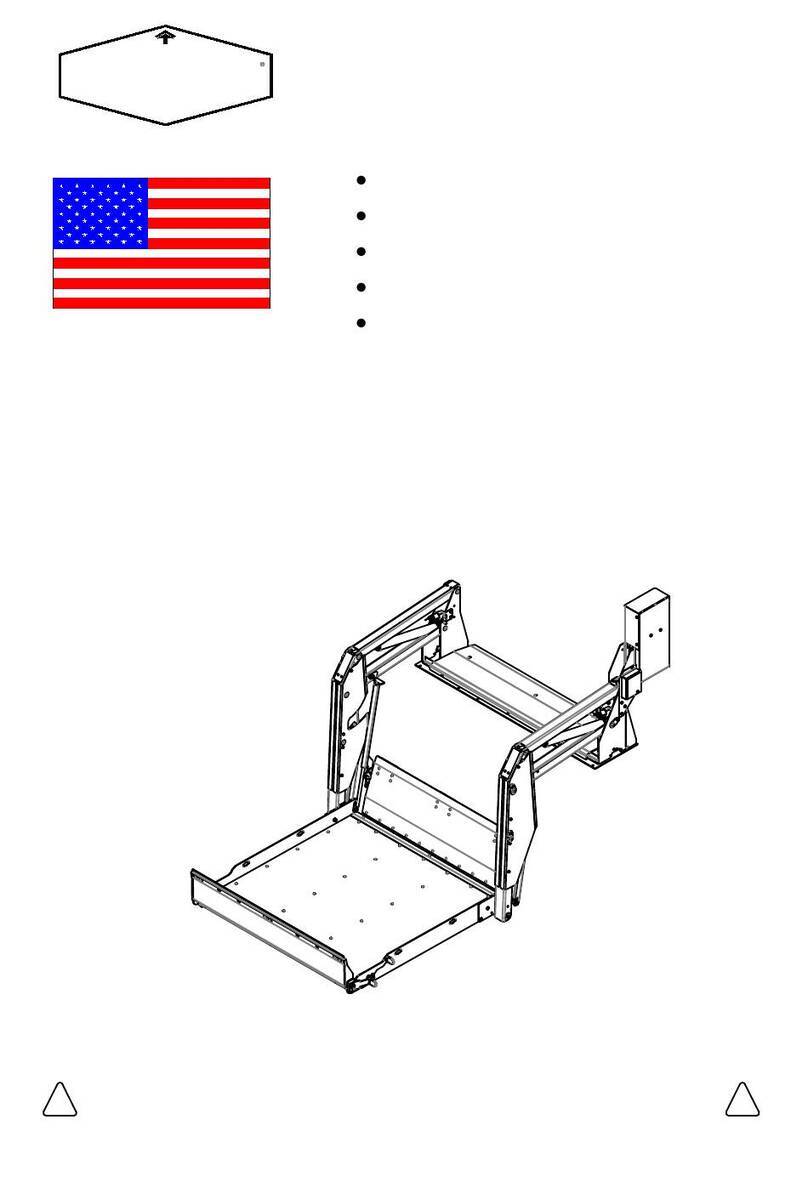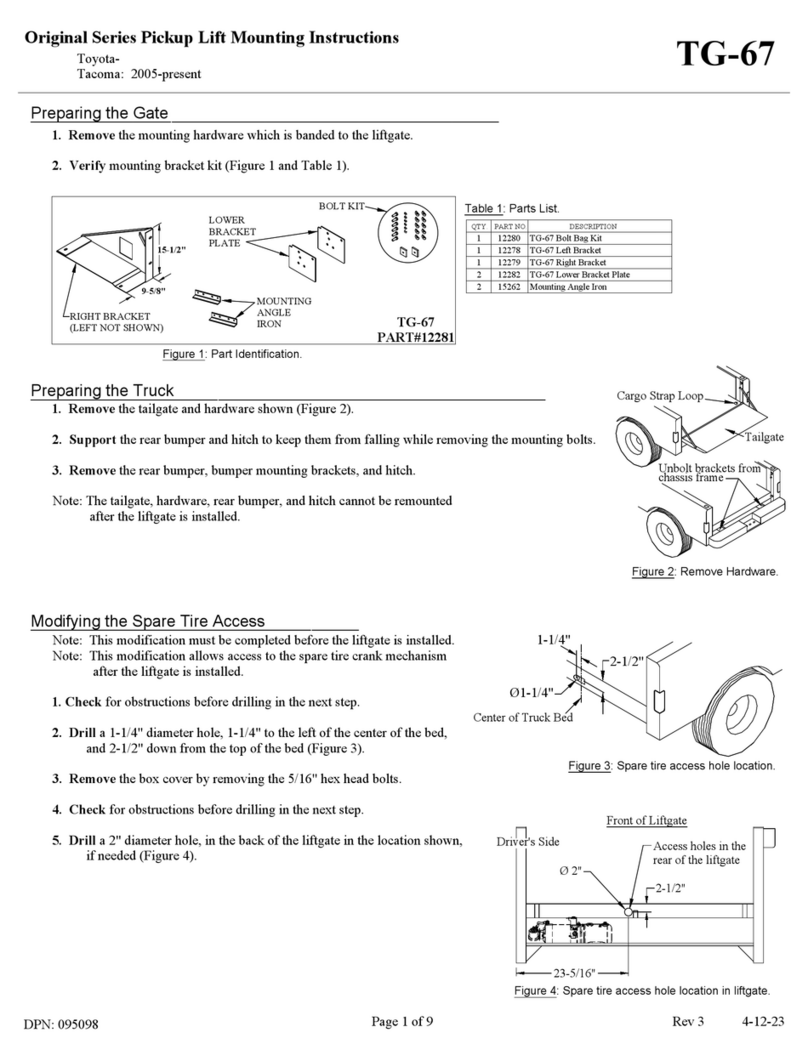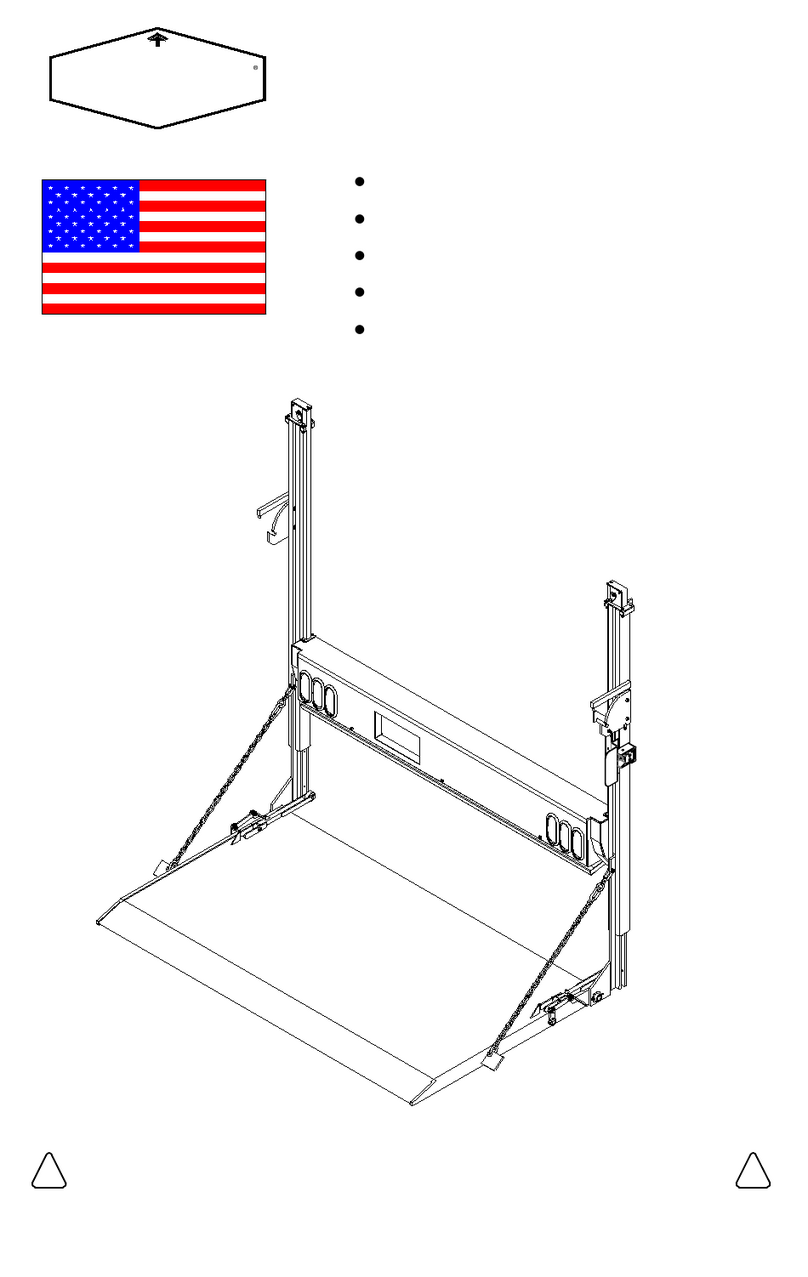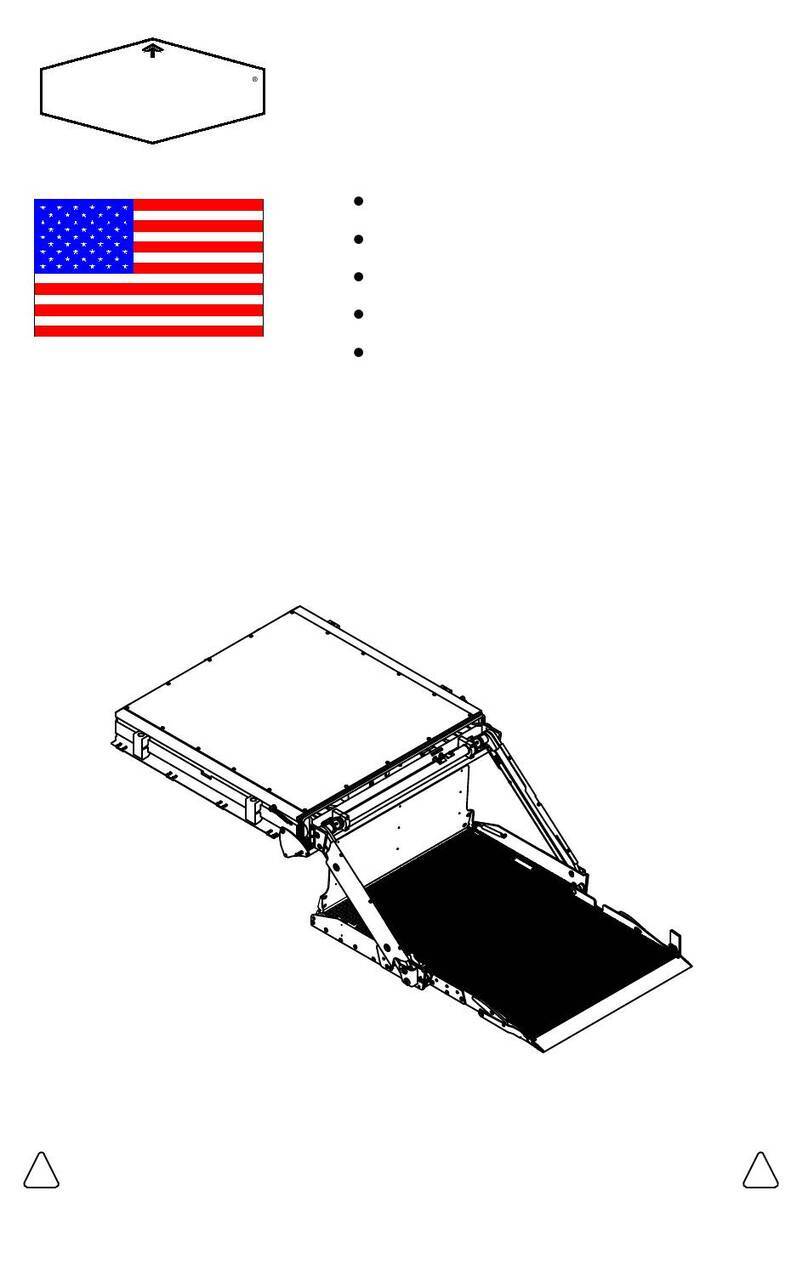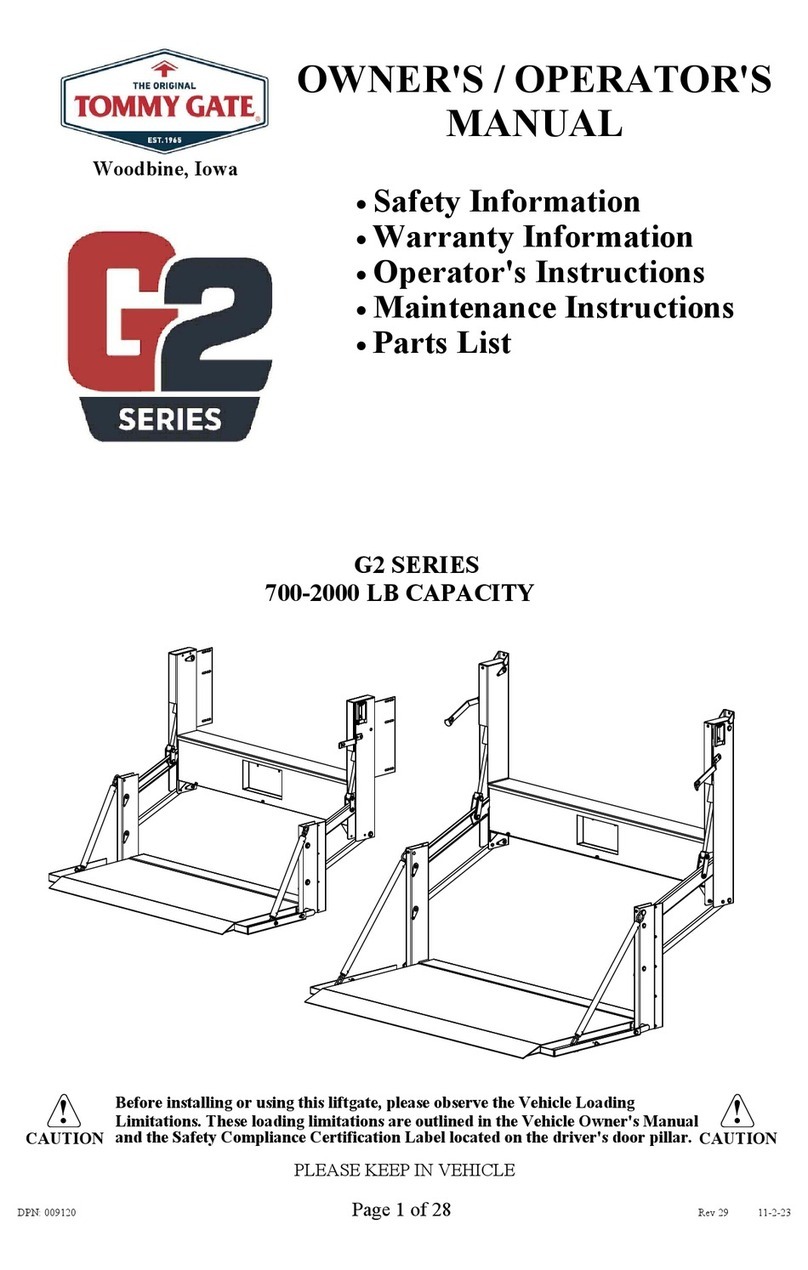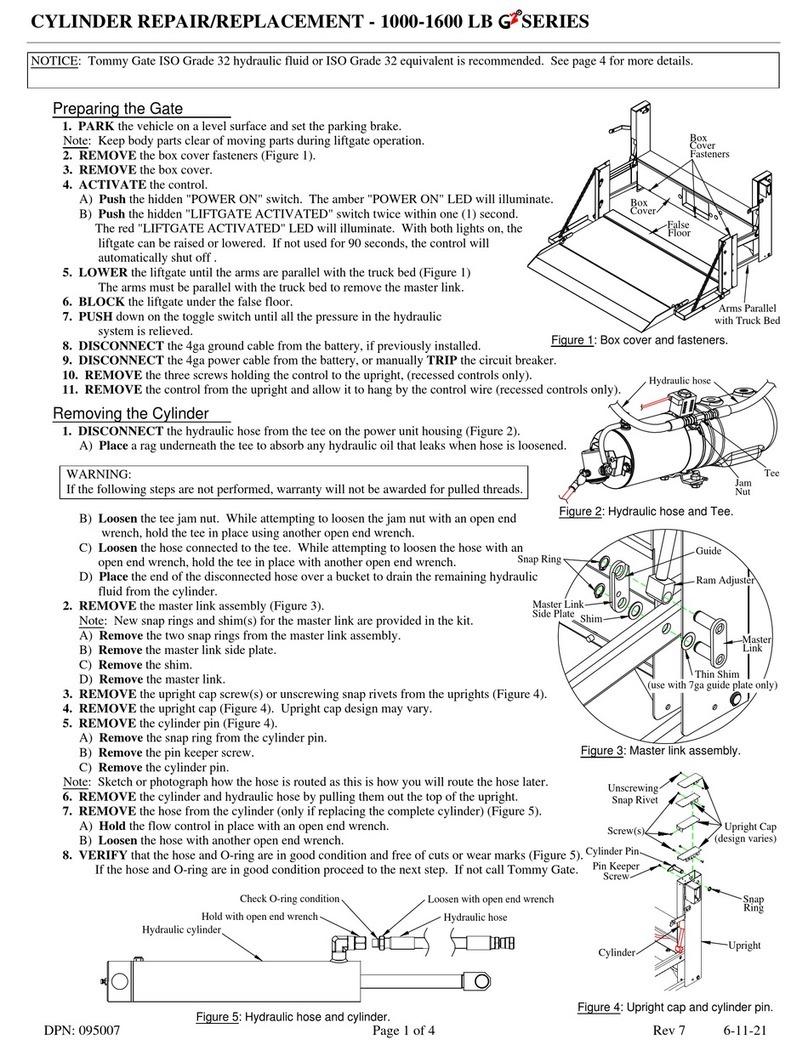1. Remove the tailgate. The tailgate hardware does not need to be removed.
2. Unbolt the tie down hooks (Figure 5).
If the tie down hooks are welded in, they do not need to be remove.
3. Remove the rear bumper mounting bolts and bumper.
The bumper and bumper mounting brackets cannot be remounted after the liftgate is installed.
Note: The factory tube and/or receiver hitch should not be removed.
The lift gate is designed to fit over the factory receiver hitch.
Modifying the Tail Light Mounting
Note: This modification must be completed before the liftgate is installed so that the tail light
bulbs can be replaced without removing the liftgate.
Note: This modification may not be needed. Check if the tail light screws can be accessed
through the clearance holes in the liftgate gussets.
1. Remove the two (2) factory tail light screws from each tail light lens (Figure 6).
The screws will not be reused after the modification.
2. Carefully Drill a 9/64" hole through each tail light lens and internal
sheet metal (Figure 6).
3. Carefully Drill a 3/16" hole through each tail light lens only, for screw clearance.
Note: Do not install the tail lights now if 1500 lb application.
4. Apply clear silicone sealant to the 3/16" holes in the tail light lenses
and stainless self-tapping screws.
5. Install a stainless self-tapping screw, supplied, into each 9/64" hole to hold
the tail light lenses in place (Do not over-tighten).
Figure 5: Remove Hardware.
Preparing the Truck
G-330
chassis frame
Unbolt brackets from
Tailgate Stay
Tailgate
Tie Down Hook
Figure 6: Tail light modification detail (if needed).
Modifying the Spare Tire Crankshaft
Note: This modification must be completed before the liftgate is installed.
Note: This modification allows access to the spare tire crank mechanism after the liftgate is installed.
1. Remove the plastic spare tire access grommet from the back of the truck box (Figure 7).
2. Remove the plastic grommet in the rear cross member of the truck frame (Figure 7).
3. Drill a 1-1/4" diameter hole, centered above the existing tire access hole, and
2-5/8" down from the top of the box (Figure 8). Some trucks have a vibration
damper that conflicts with the drilled hole, the damper can be removed.
Plastic
Grommet
Holder
Spare Tire
Ø1-1/4"
2-5/8"
existing tire
access hole
Figure 7: Spare tire access modification.
Figure 8: Spare tire access hole location.
Note: The filler strip must be mounted on the liftgate before the liftgate is installed.
Note: The filler strip will fill the gap between the liftgate and the truck bed.
1. Arrange the three (3) 12ga. x 5-9/16" x 19-1/2" G-330 filler strips end to end with the
short flange flat against the back of the liftgate mainframe and the top even with the
top of the top of the mainframe.
2. Avoid obstructions inside the mainframe box while attaching filler strips.
3. Attach the three (3) filler strips to the mainframe with the provided self drilling screws.
Installing the Filler Strip
Figure 9: Filler strip placement.
Centered above
Self-tapping
Tail Light
Factory
Screws
Screw
Drilled hole
Stainless
Tail Light
Lens
Liftgate Gusset
Clearance Hole
Approx. 3" for Class 4 Hitch
Approx. 4" for Class 5 Hitch
Pickup Lift Mounting Instructions
v
re
R
R
Filler Strip
DPN: 095120 Rev 6 4-12-23
of 11Page 2
